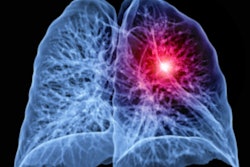
A notification and referral system for emergency department (ED) patients with incidental imaging findings improves follow-up of these results, a study published June 23 in the Annals of Emergency Medicine has found.
After developing and implementing software to provide notification of incidental imaging findings from the ED and facilitate referrals for follow-up, researchers from Vanderbilt University Medical Center in Nashville, TN, found that the application facilitated follow-up in 95% of cases. These results could translate to better patient care, wrote a team led by Dr. Tyler Barrett.
"The development of a reliable notification and follow-up system is an important patient safety intervention given the opportunity to potentially identify undiagnosed malignancies," the group noted.
Incidental abnormal results on imaging in patients presenting to the emergency department are common -- studies have reported that 20% to 44% of patients who undergo CT have incidental results, for example -- and 6% to 27% of these findings are related to first diagnosis of malignancies. But less than half are reported, "leading to patient safety and medicolegal concerns," according to Barrett and colleagues.
"Due to the rapid care provided in EDs and the common involvement of multiple specialties and providers, it may be difficult to ensure that patients always receive the appropriate communication regarding test results," the group wrote. "This is particularly true for radiographic findings that may not be pertinent to the current visit. The timely communication of these incidental findings to patients is important ... [but] there have been few examples of comprehensive systematic processes for the management of incidental findings."
To address the problem, Barrett and colleagues designed and put into place an electronic health record-based referral system to connect ED patients with appropriate outpatient follow-up that they tested between May 2020 and June 2021. During that time, 932 ED patient visits included critical imaging results for incidental findings.
The system consisted of a template that prompted ED physicians to report critical incidental radiology findings and request follow-up through the hospital's electronic health record. The information was then distributed to nurse case managers, who arranged follow-up encounters based on the clinical acuity of the findings.
Of the 932 ED visits with critical incidental imaging findings, 888 (95%) resulted in communication of these findings and follow-up care plans. The system accomplished what it intended: to protect against ED factors that confound the notification process, including the fast pace of care, patients' and family members' concerns about primary complaints, and handoff to other clinicians before patients' ED evaluations are complete, according to the authors.
Going forward, the group plans to explore using the system beyond the emergency department.
"[Our] leadership team and hospital administration deemed this a successful initiative and are expanding the process to admitted patients on two service lines – a surgical team and a medicine team," the researchers wrote. "Translating the process to the inpatient unit introduces new challenges, but our team is excited for the program expansion."



















